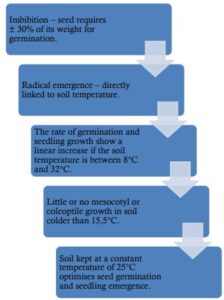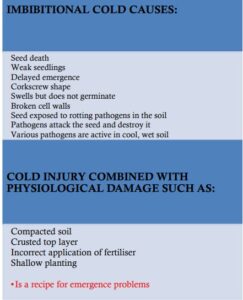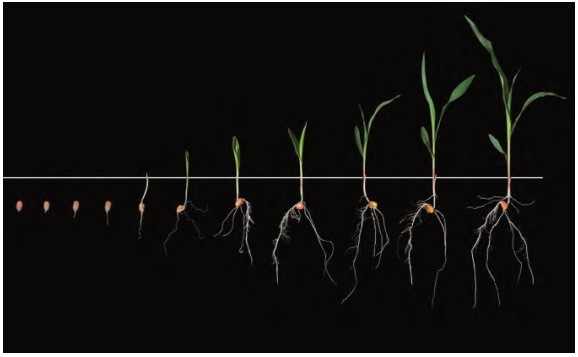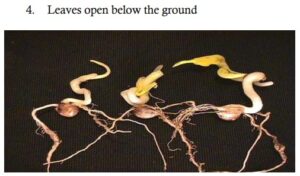Summary
- Cold injuries lead to a diminished stand and subsequently to a reduction in yield.
- Cold that presents early in the season, has a sizable influence on the development of maize.
- Changes in soil temperature are a factor that subjects maize to stress after planting.
How does the life of a maize plant begin?

What controls germination?

What happens with the seed after planting to emergence?

Seed planting steps.
Why is maize so sensitive to early season cold stress?
- Maize is a warm-season crop – optimal temperatures for germination are from 25°C; in other words, italways experiences a certain degree of cold stress.
- Prolonged exposure to temperatures below 10°C promotes seed degeneration and seedling diseases.
- Fluctuations in soil temperature of only 3°C can affect mesocotyl growth.
- The cold spell can cause seeds to rot underground; seeds die before or shortly after germination.
Imbibitional chilling injury
- Imbibitional chilling injury causes physical damage to the seed.
- The germination process requires heat units.
- Cold, wet soil requires more heat units to heat soil to 20°C/25°C.
- Seed rot occurs in cold soil if the temperature is below 13°C.
- During imbibition, and with temperatures lower than 13°C, the metabolic activities in the seed begin to decrease.
- The seed in the soil absorbs water without any active metabolic processes.
- This causes the cell membranes to break and the proteins to leak into the soil as in figure 2.
- As soon as the temperature of soil increases after a cold spell, the cell membranes can recover, and normal germination can take place.
- If the temperature of soil remains low, it prevents cell membrane repair and degeneration takes place.

Figure 2. Broken cell membrane showing protein leaking into the soil.

Cold stress.



















